Would you like to become a project manager in order run successful projects, but not sure if that course might be your best start? This ultimate guide covers some of the skills, useful tips and ways you can start a career in Project Management. Includes tips to get you started or take your skills a step further.
Project Management Basics
To negotiate the vast landscape that is managing projects, anyone with an interest in project management must have a foundation of so! Project management is the process of initiating, planning and executing projects on time within budget. A structured approach is needed to meet the objectives of a project and keep it within boundaries in regards to scope, schedule, cost and quality. The major processes of project management are initiation, planning, execution and control, monitoring & closing. Below are tasks and deliverables specific to each phase that ensure successful project completion. Once you have these covered, they will help facilitate more complex project management skills later on.
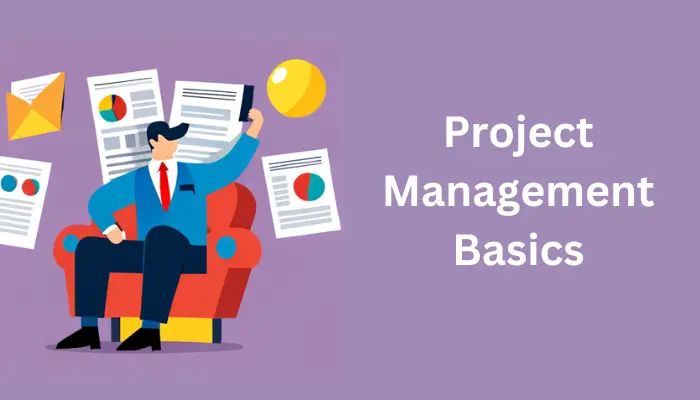
| Positive Aspects | Negative Aspects |
|---|---|
| 1. Improved Organization and Efficiency | 1. Initial Learning Curve |
| Mastering project management basics helps streamline processes and improve overall efficiency. | Learning the fundamentals of project management can be challenging and time-consuming at first. |
| 2. Better Resource Allocation | 2. Time-Consuming |
| Effective project management allows for optimal allocation of resources, reducing waste and maximizing productivity. | Implementing project management principles can be time-consuming, especially for complex projects. |
| 3. Enhanced Communication | 3. Potential for Over-Reliance on Tools |
| Project management basics promote clearer communication and coordination among team members and stakeholders. | Relying too heavily on project management tools and software may overshadow the importance of interpersonal communication. |
| 4. Risk Management | 4. Requires Continuous Monitoring |
| Understanding project management helps identify potential risks early and develop strategies to mitigate them. | Projects need ongoing monitoring and adjustment, which can be demanding and require constant attention. |
| 5. Increased Accountability and Tracking | 5. Can Be Overwhelming for Small Projects |
| Project management practices improve tracking of progress and accountability, ensuring goals are met. | For smaller projects, applying formal project management techniques might be unnecessarily complex or burdensome. |
Communication and Leadership
Obviously there has always been a strong link between good project management, and effective communication along with not too shabby leadership. You act as a face between team, stakeholders and clients at the client site: The project manager is most in common with all three parties. Or how important it is for you to help everyone keep their ducks in a row through clear communication, active listening and effective information delivery? As a leader, it is up to you how inspired your team will feel about working together towards the same objective. This includes but is not limited to managing expectations, delegating tasks, conflict resolution and celebration of successes. So focus more on developing good communication and leadership abilities to be able to achieve these project management outcomes – of building a strong team who works really well together, is high performing in their capability and delivery mechanisms: this way you can drive better success with the projects that are being planned or already underway.
Prestige 2 – Time Management and Prioritizing
Time management and prioritization are two of the center components when it comes to project management. There are various things to do, deadlines and several wishes fill your thoughts and you recognize it easy to be buried in. As a project manager, you need to prioritize tasks on the importance and urgency level which are also in alignment with the projects objectives. It all comes down to time commitment, a planned out timetable and task delegation as well as the willingness of flexibility for things in life that are completely not feasible. Train yourself in these areas and you will be able to get the projects done as per your plan.
Risk Management
All projects, regardless of industry or undertaking will have inherent risks like cost overruns, scope creep and unanticipated roadblocks. You as a project manager should be aware of these risks, and have some kind of plan to mitigate the effect they will bring about. This includes performing risk assessments, developing contingency plans and monitoring for potential issues on a regular basis. Thus, with risk management you can absorb the validity of risks and might have to affect your project over time which leads towards completion.
- More Project Management Skills To Master
- Take courses, workshops and get certified in the latest trends.
- Organize your work by using tools like Project Management Software, to-do list and Calendars
- Proactively identify potential blockers and seek out solutions before they arise.
Adopt a more agile and responsive approach to changing project specifications or unforseen complications.
Develop excellent working relationships with your team members, stakeholders and clients by communication effectively.
As long as you keep learning and improving your project management skills, then you can apply them to almost any type of project! Stay curious, open and adaptable.
Project Management Tools
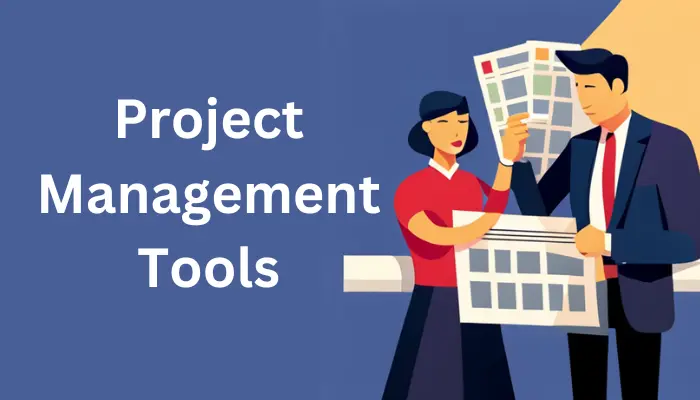
| Positive Aspects | Negative Aspects |
|---|---|
| 1. Enhanced Organization | 1. Cost |
| Project management tools help in organizing tasks, timelines, and resources efficiently. | Many project management tools come with subscription fees or costs that may be prohibitive for small teams or individual users. |
| 2. Improved Collaboration | 2. Learning Curve |
| These tools facilitate better communication and collaboration among team members by providing shared platforms and updates. | There can be a steep learning curve to effectively use some tools, requiring time and training. |
| 3. Better Tracking and Reporting | 3. Risk of Over-Reliance |
| Project management tools offer advanced tracking and reporting features to monitor progress and performance. | Over-reliance on tools can sometimes lead to neglecting fundamental project management practices or critical thinking. |
| 4. Efficient Resource Management | 4. Integration Issues |
| Tools help allocate and manage resources more effectively, ensuring optimal use and avoiding overcommitment. | Integrating project management tools with other systems (like email or CRM) can be challenging and may require additional setup. |
| 5. Centralized Information | 5. Maintenance and Updates |
| They provide a centralized location for storing and accessing all project-related information, which enhances accessibility and organization. | Tools require regular updates and maintenance, which can be time-consuming and may introduce new bugs or issues. |
As a project manager in the digital world, you have an armoury of tools available to increase your productivity. There are different project management tools to choose from compounded by the fact that there comes a specific software for specializing in one area of project. Example of project management Tools
Trello: Trellogot its decision-making powers with its boards, lists and cards that keeps you pretty organized in terms of addressing any tasks or projects. It is good for tracking progress of projects and assigning tasks to different people as well as also collaborating with team.
Asana – As mentioned earlier, it allows project managers to create tasks and deadlines in multiples, assign people or teams, etc. It includes project timeline, task dependencies and milestones to keep everything on the same page.
Microsoft Project – achieve the complexjectories
Jira (Agile Project management tool) – Jira is a popular agile project tracking software that has functionalities for issue tracking and bug/troubleshoot recording to plan your s/w development projects. Scrum, Kanban and other agile methods are all supported.
BaseCamp: Basecamp is one of the easiest ways to tackle your project management issues. This feature includes things like to-do lists, file sharing and messaging scheduling to help keep everyone on the same page with less headache.
Monday. com: This versatile platform that allows project managers to configure workflows, and create automated routine. Very visual, giving you a snapshot of your projects.
Smartsheet- suitable for project management as the solution combines spreadsheet-like flexibility with powerful project-management and automation features aiding teams in planning, tracking, automating work processes.
The best tool is dependent on your project and team requirements. These tools will help you streamline your communication, produce better results and ensures everyone is always on the same page when it comes to project goals. Use these technologies to manage your projects better and deliver on time and in scope.
Project Management Certification
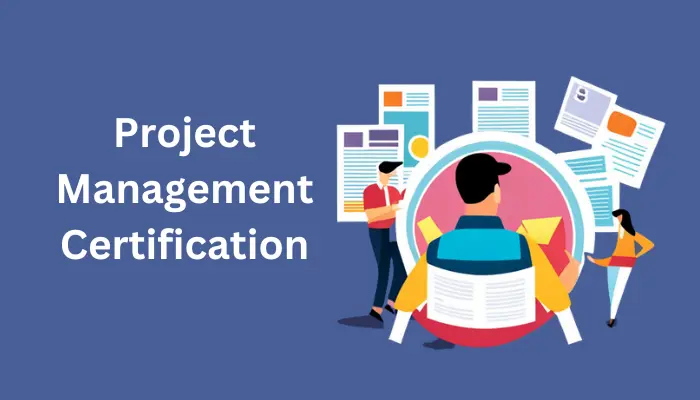
| Positive Aspects | Negative Aspects |
|---|---|
| 1. Enhanced Career Opportunities | 1. Cost |
| A certification can open doors to new job opportunities and career advancement in project management. | Obtaining a certification often involves significant costs for courses, exams, and study materials. |
| 2. Increased Credibility and Recognition | 2. Time Commitment |
| Certifications provide formal recognition of your expertise, enhancing your credibility with employers and clients. | Preparing for and completing the certification process can be time-consuming, requiring a substantial commitment. |
| 3. Improved Knowledge and Skills | 3. Requires Ongoing Maintenance |
| Certification programs often provide in-depth knowledge and practical skills that improve your project management capabilities. | Many certifications require ongoing professional development or renewal, which involves additional time and effort. |
| 4. Networking Opportunities | 4. No Guaranteed Job Placement |
| Certification programs often provide access to a network of professionals and industry events, facilitating valuable connections. | While certification can improve job prospects, it does not guarantee job placement or success in securing a position. |
| 5. Demonstrated Commitment to Profession | 5. Potential for Certification Saturation |
| Achieving certification demonstrates your dedication and commitment to the field of project management. | In some industries, the proliferation of certifications may lead to oversaturation, potentially diminishing the value of individual certifications. |
Might go for a Project Management Certification Make – This can give your career an extensive boost through skill enhancement, marketability and the provided structure of best practices mentioned above. Following are some of the key international certifications that can help to differentiate yourself in this competitive field. Below are some of the top certifications to pursue.
Project Management Professional (PMP): The PMP credential is a reputed global certification offered by Project Management Institute (PMI) for project professionals. This shows that you have organized projects, led teams and achieved results on a budget and deadline. Certification needs a mix of experience financing and education in project management as well as passing a strenuous test.
Certified Associate in Project Management (CAPM): The CAPM certification from PMI is for those who are just starting their project management careers. An entry-level exam, it includes the basics and terminology of project management which may serve as a good baseline for more advanced certifications such as PMP.
PRINCE2 (Projects IN Controlled Environments) -This is a certification from?AXELOS which primarily owns the methodology and processes followed for successful project management. PRINCE2 is also widely used in Europe and for government projects. Foundation and Practitioner level certification – Progress your capabilities as you learn.
Agile Certified Practitioner (PMI-ACP): Another PMI-pushed cert, the exam is aimed at those operating with Agile methodologies. It proves your skills in Agile principles and methodology, e.g., Scrum Kanban Lean XP
Certified ScrumMaster (CSM): CSM is a certification offered by the Scrum Alliance for professionals who need to be able to lead scrum teams and work on Agile project practices as well. It goes all around about the Scrum principles and practices taking roles, events or artifacts.
CompTIA Project+ : To enhance an IT project manager who wish to acheive a complete understanding about lifecycle of the project. CompTIA Project+ provides the skills that are needed for managing and administering small-to-mid size projects.
All these certifications need dedication, time and effort but it is an investment that can help one in long-term with better career prospects, a hefty paycheck and broader opportunities within the realm of project management. Getting certified is a way for you to let the world know you are proficient and dedicated in your craft.
Project Management Techniques
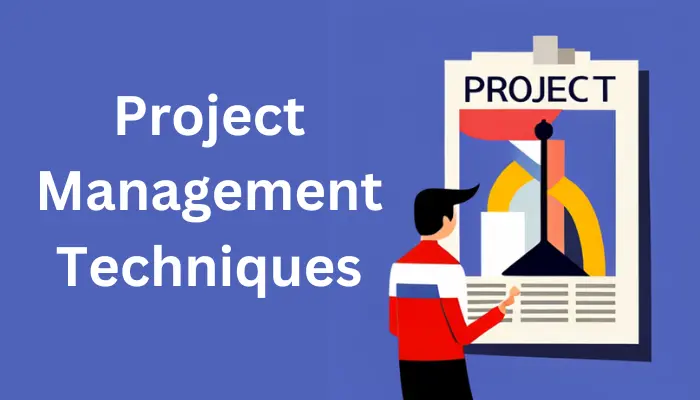
| Positive Aspects | Negative Aspects |
|---|---|
| 1. Improved Project Planning | 1. Complexity in Implementation |
| Project management techniques enhance the planning process, leading to more structured and organized projects. | Some techniques can be complex to implement, requiring detailed understanding and careful execution. |
| 2. Better Risk Management | 2. Resource Intensive |
| Techniques like risk assessment and mitigation strategies help identify and address potential issues early. | Applying these techniques effectively can require significant time and resources, which may be a burden for smaller projects. |
| 3. Enhanced Team Collaboration | 3. Potential for Over-Documentation |
| Techniques such as regular meetings and collaborative tools improve communication and teamwork. | Over-reliance on detailed documentation and processes can sometimes lead to excessive paperwork and slow decision-making. |
| 4. Increased Efficiency and Productivity | 4. Risk of Rigidity |
| Efficient techniques streamline processes, leading to faster and more productive project execution. | Strict adherence to certain techniques might result in rigidity, making it difficult to adapt to changes or unforeseen issues. |
| 5. Clearer Goal Setting and Tracking | 5. Training and Skill Requirements |
| Techniques often provide frameworks for setting clear goals and tracking progress, improving project outcomes. | Implementing various techniques may require additional training and skill development, which can be a challenge for teams with limited experience. |
Project Management is not all about the right tools, or some certifications, you need to master a lot of techniques in order for your project management skills so that they continue ensuring seamless projects:animated ways-toggle contentsmoothly ran. Below are a few fundamental project management archetypes which will allow you to present, organise and execute the endeavors successfully on projects.
SMART Goals: Specific, Measurable, Achievable, Relevant and Time-bound goals make sure all project objectives are distinct & can be achieved within the allocated amount of time.
Work Breakdown Structure (WBS):
This approach involves dividing a project into smaller, more manageable pieces. This makes it easier to put the project in perspective but also helps create a hierarchical decomposition of your scope.
Critical Path Method (CPM) :
This technique is utilized for deciding the longest arrangement of reliant exercises and suggests a base time required to finish an undertaking. It is critical for scheduling the project and identifying any bottlenecks.
Gantt Charts:
Gantt charts create a visual timeline for project tasks so you can follow along progress, set deadlines and pinpoint schedule conflicts.
Kanban :
This method uses visual boards to manage work flowing through a process. It is very good to enforce a smooth workflow and prevent release errors.
Minimize Risks :
This becomes important to protect your business against any disruptions by recognizing risks at an early stage and coming up with strategies that mitigate these potential threats, Develop risk management solutions – Along with regular risk assessments, you need to develop contingency plans and they are mandatory for efficient prevention of risks.
Stakeholder Analysis:
Establishes an understanding about who are your stakeholders, internal relationships between them and how they may impact on the project.
Scrum – An Agile Scrum framework mainly designed to perform work in sprints, is made up of small units that can be completed one by one and then iteratively expanded during the rest. It also gives incremental progress results after every working situation rather regular feedbacks with flexibility changesandering.producible accommodation. While this is advantageous in software development, it can be used for a wide range of projects.
Resource Allocation – Managing and assigning resources (IT staff, IT budget, computer hardware) efficiently so that work gets done on time and project goals are met.
Earned Value Management (EVM) –
EVM is a technique used to compare the planned resource expenditures over time, with what has actually been spent and work done since the beginning of the project. It gives a number to take project decisions with full information.
Integrating these methods into your project management practice, you can improve project outcomes, enhance team collaboration, and ensure the successful delivery of your projects.
Project Management Skills
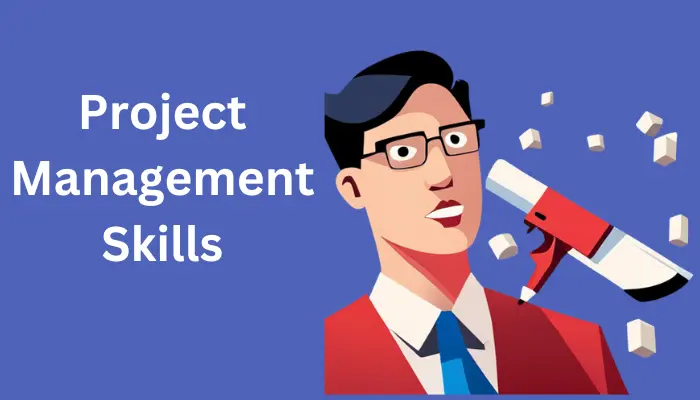
| Positive Aspects | Negative Aspects |
|---|---|
| 1. Improved Project Execution | 1. Steep Learning Curve |
| Strong project management skills lead to more efficient and successful project execution and delivery. | Developing these skills can be challenging and time-consuming, especially for beginners. |
| 2. Enhanced Leadership and Team Management | 2. High Responsibility |
| Effective project management skills enhance your ability to lead teams, delegate tasks, and resolve conflicts. | Project managers bear significant responsibility for the project’s success or failure, which can be stressful. |
| 3. Better Risk Management | 3. Potential for Burnout |
| Skilled project managers can identify and mitigate risks more effectively, reducing the likelihood of project issues. | The demanding nature of project management can lead to burnout if not managed properly. |
| 4. Increased Career Advancement Opportunities | 4. Requires Continuous Learning |
| Proficiency in project management can open doors to advanced positions and career growth within organizations. | The field requires ongoing learning and adaptation to new tools, techniques, and best practices. |
| 5. Enhanced Problem-Solving Abilities | 5. Potential for Overemphasis on Process |
| Strong project management skills improve your ability to solve problems and make informed decisions quickly. | There’s a risk of focusing too much on processes and frameworks, potentially overlooking practical solutions or team dynamics. |
All the works of leadership and organization may require a certain skill that will enable people to implement their projects. The Essential Project Management Skills are:
Management
A project manager has to manage the team, ensure that they achieve theirs goals and serve as a leader. This includes defining mission, among one enticing approach to presentation and becoming cultural amongst team.
COMMUNICATION
THE CENTRAL BINDING FOR MAINTAINANCE OF YOUR TEAM, STAKEHOLDERS AND CLIENTS. Include verbal and oral communication skills
Making the time to track every little thing and find out just how long you have before finishing it all contributes to that sometimes monotonous nature of maintaining your edge over project deadlines or keeping momentum when working through what might become a never-ending task.
Projects never go as planned
via Critical Thinking You will need to be a quick problem solver in your work and you should have the ability to identify common problems easily so as come up with practical solutions.
Negotiation
Many of our interactions with clients, stakeholders and team members can the topic for negotiation to align interests in addition secure resources or resolve conflicts.
Risk Management
this will help you to anticipate risks and have mitigation strategies in place so that they do not push timelines out (or heaven forbid cost blow-outs).
Budget
A project should result within budget, and this is just accomplished by planning well but not losing eyes from where the money goes.
Technical know
how: Some projects will require that you understand more technical aspects so as to get details across well with the tech team.
Flexibility
the more readily a project can change and reconfigure scope, timeline or resources required support progress being made towards outcomes.
Emotional Intelligence
Not only identifying and understanding your own emotions but those of the whole team, which in turn will lead to improved relationships between parties such as plant bridge suppliers that would practically mean more efficient teams.
Mother-wombo-combo
details Details – the eagle eyes to spot potential problems and every piece had followed up earlier spec.
By perfecting these skills, project managers will increase the return on investment for your projects along with the entire teams. Even more significantly, project management is a profession that requires ongoing evolution in order to be extremely proficient. Hence, Another important thing is one should check own performance by time to time along with taking inputs from the co members & stakeholders and improve these capabilities. With the right combination of techniques, knowledge, and skills, you can become a highly effective project manager who delivers successful projects consistently.
Project Management Templates
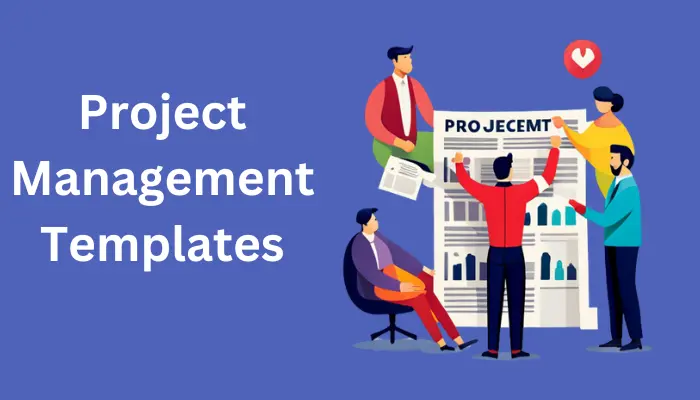
| Positive Aspects | Negative Aspects |
|---|---|
| 1. Time Savings | 1. Potential for Inflexibility |
| Templates streamline the creation of project documents, saving time and effort in setting up project plans. | Templates may be rigid and not adaptable to all types of projects or unique requirements. |
| 2. Consistency | 2. Risk of Over-Reliance |
| Using templates ensures consistency in project documentation and processes, which can enhance clarity and coherence. | Over-reliance on templates might lead to a lack of customization and might not address specific project needs effectively. |
| 3. Reduced Error Rate | 3. Requires Regular Updates |
| Templates help minimize errors by providing pre-designed structures and formats, reducing the likelihood of omissions. | Templates need to be regularly updated to reflect changes in best practices or organizational standards, which can be time-consuming. |
| 4. Easy Implementation | 4. May Not Address All Scenarios |
| Templates facilitate easy implementation of project management processes, especially for teams with less experience. | Some templates might not cover all project scenarios or complexities, potentially requiring additional customization. |
| 5. Standardization Across Projects | 5. Can Be Overly Generic |
| Standardizing templates across projects promotes uniformity and helps in comparing and evaluating different projects. | Generic templates may lack the specificity needed for particular projects, resulting in less effective project management. |
Project management templates can help standardize the way you’re running projects and streamline your workflow. Using a template is an organized way of handling project documentation and tracking various aspects that go along with it. 8 important project management templates
Project Charter Template –
A template that covers the vision, objectives, scope of work, stakeholder and deliverables for a project. Overview It is a general document,which gives you an overview of the project.
Work Breakdown Structure (WBS) Template:
This template is used to break down the project into smaller tasks and subtasks. It helps in managing work and assigning roles to a team member.
Create a Gantt Chart –
A request to create an interactive project schedule timeline. Crondone : A simple cli tool for tracking the completion of your tasks on time regarding setting deadlines or identifying schedule conflicts.
Risk Management Plan Template:
Another plan that enables you to identify risk, evaluate it and accordingly prepare a response. It consists of sections for risk assessment, analysis, response planning and monitoring.
Stakeholder Analysis Template:
Identify and analyze project stakeholders using this template. It allows you to learn about their likes, and influences what they do (such as visiting your site) so it enables you to define new messaging strategies.
WorkflowAlation A Resource Allocation Templates e.g., team members, budget or materials. This makes sure that all the resources required are ready whenever needed.
Template for meeting minutes:
Use this template to document the key details and follow-up action items from your project meetings. This guarantees that details are not left under the rug and allows your team members to be aware of what was discussed and agreed upon.
Proj Project Status ReportTemplat:
This templet is used when thereis a need to keep your stakeholders up-to-date with the project progress. These are divided for the project summary completed milestones upcoming work issues and risks
Change Request Template –
used to document an incoming request for changes in the project scope, schedule or budget. It provides the means to assess how changes impact and collect endorsement from stakeholders.
Lessons Learned Template:
Use this template at the end of a project to record what went right and how it could be done better. After the project is completed, it goes a long way in documenting valuable insights and lessons learned so that future projects can learn from this experience.
Using them as part of your project management toolkit can make you more efficient, allow consistency and improve the landscape in all cases.omes.
Project Management Strategies
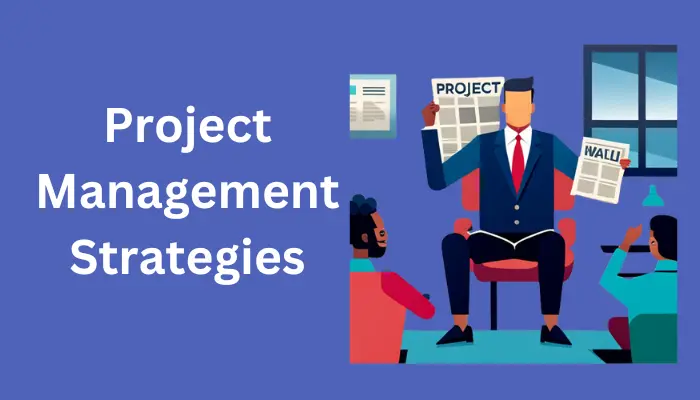
| Positive Aspects | Negative Aspects |
|---|---|
| 1. Structured Approach | 1. Can Be Time-Consuming |
| Strategies provide a clear framework and structure for managing projects, enhancing organization and efficiency. | Implementing and adhering to structured strategies can be time-consuming, potentially delaying project initiation. |
| 2. Better Risk Management | 2. May Not Fit All Projects |
| Effective strategies help identify, assess, and mitigate risks, reducing the likelihood of project issues. | Some strategies may not be suitable for all types of projects, especially those with unique or unconventional requirements. |
| 3. Improved Resource Allocation | 3. Risk of Over-Complexity |
| Strategies often include methods for optimizing resource allocation, leading to better use of time, money, and personnel. | Complex strategies can lead to over-complication, which might make project management more cumbersome and less agile. |
| 4. Enhanced Communication and Coordination | 4. Requires Training and Expertise |
| Well-defined strategies improve communication and coordination among team members and stakeholders. | Effective implementation often requires specialized training and expertise, which may not be available within the team. |
| 5. Clear Goals and Objectives | 5. Potential for Rigidity |
| Strategies provide a clear path and set of goals, helping teams stay focused and aligned with project objectives. | Strict adherence to certain strategies can lead to rigidity, potentially making it difficult to adapt to changes or unforeseen challenges. |
This is where efficient project management strategies come into the picture which helps in managing a vast spectrum of projects and ensure that they are completed on time. Major Strategies to Include
Set Clear Goals:
Objectives which are clear and concise help in bringing up together the project team, provides a path of success. If your team members understand what is expected and their role in its success, you will have defined clear objectives.
Create a Holistic Plan:
A full-fledged project plan details the extent, schedule, manpower and tasks needed to accomplish set objectives. The plan should include actionable steps and benchmarks to ensure everybody is on the same page moving forward and can track progress.
Communication:
We focus on periodically./ frequent and clear #communication to keep all team members / stakeholders / clients informed about what is happening with the project. Employ different communication channels and collaboration tools for better interchange of info
Enforce Agile Methodologies:
Techniques of agility like Scrum or Kanban allow flexibility and iterative process. These approaches facilitate regular feedback and the adjustment of course, ensuring project momentumrontorestation.
Monitor and Control Scope (or Manage Stakeholder Expectations in the Definition): What is within scope, what is not. That said, scope creep slows everything down and prevents you from stretching your resources too thin.
Use Technology:
Increasing the use of project management software and its utilities to streamline processes, automate routine tasks or get an overview on real-time data from current status. These are a huge asset in productivity, such as Trello or Asana, Microsoft Project etc.
Involve Stakeholders:
Encouraging stakeholders to participate in the project lifecycle supports managing expectations, receiving critical feedback and gaining buy-ins. Engaging your stakeholders regularly makes to benefit that their concerns are addressed on time and feed backs catered.
Build a Team:
Promote teamwork and synergy, cultivate an inclusive culture that appreciates ideas and inputs. Building Exercises and Collaboration tools can Enhance Team-cohesiveness and Productivity.
Regular Reviews:
Regular project reviews and retrospectives help you determine progress, identify problems, take corrective action. This process also ensures that the course remains in line with project goals, and serves to improve things for next time.
Risk Management Plan –
It is important to devise a risk management plan which helps in identifying, assessing and mitigating risks. Addressing risks proactively to reduce their effect on the project timeline and budget.
Following these project management tactics will help to improve your delivery of projects, meaning you can deliver on-time and within scope & budget. More than just those, effective project management is a dynamic model that requires an awareness of education and learning at all times.nt.
Project Management for Beginners
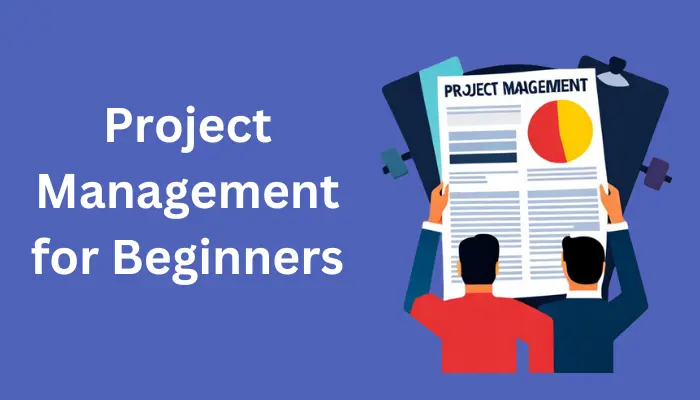
| Positive Aspects | Negative Aspects |
|---|---|
| 1. Fundamental Understanding | 1. Steep Learning Curve |
| Learning the basics provides a solid foundation in project management principles and practices. | Beginners often face a steep learning curve, which can be challenging and overwhelming initially. |
| 2. Improved Organizational Skills | 2. Risk of Over-Simplification |
| Acquiring basic project management skills helps in organizing tasks, resources, and timelines more effectively. | Initial training might present simplified concepts that do not cover the complexities of real-world projects. |
| 3. Better Communication and Teamwork | 3. Potential for Misalignment |
| Understanding project management basics enhances communication and teamwork, fostering better collaboration. | Without advanced knowledge, there may be a risk of misalignment with more experienced team members or established methodologies. |
| 4. Foundation for Advanced Learning | 4. Time and Effort Required |
| Mastering the basics creates a strong foundation for further learning and more advanced project management techniques. | Gaining a basic understanding requires time and effort, which might detract from other responsibilities or learning areas. |
| 5. Increased Confidence in Managing Projects | 5. May Not Address Specific Needs |
| Basic project management skills boost confidence in handling projects and making informed decisions. | Beginner-level training might not address specific industry needs or specialized project scenarios, limiting applicability. |
Starting your jIf you are considering project management as a field to enter into, getting started can be intimidating – but with practice and this information you will have the path laid in front of many advantages. Basic tips and steps for beginners.
Learn Project Management Fundamentals
What is a Project? A project is a temporary effort with an intended start date and completion to develop a distinct product, service or end.
Project Life Cycle: Over the long run, most projects follow a life cycle that does include initiation, planning, execution/production phase and closure.
Learn Key Terminology
- ScopeSpecific project boundaries—what will and won’t be included.
- Deliverables – The products generated as a result of project activities, both tangible or intangible.
- Milestones – Important project timeline points where progress has been made.
Essential Skills
Communicate: Be able to articulate information for the rest of your team and stakeholders.
- ORGANIZATION: Track to-dos, deadlines and responsibilities
- Don’t just lead your people, take them on the flight to attaining project goals.
- Problem-Solving: Addressing challenges and coming up with solutions.
- Start with Simple Tools
- To Do Lists – Start off by managing tasks with easy To-Do lists.
Spreadsheet: You can also use the spreadsheet in order to follow up project components like timelines, tasks and resources.
1st Software: Learn the basics of simple project management software – Use Trello and Asana
- Create Your First Project Plan
- Goal setting: Clearly define your goals.
- You can do this by breaking your project down into smaller tasks.
- Divide Responsibilities: Divide the responsibilities on each basis of their skills and time.
- Deadlines: Assign realistic time limits on task completion.
- Track the Progress: Examine task completion and make any needed alterations.
- Learn from Experience
- Review: Get feedback from the team and stakeholders periodically in order to refine your processes.
- Step back: After you complete your project, take a moment to step out of the process and look at what worked (and didn’t).
- Document Lessons Learned: Capture all insights and experiences to use for future projects.
By putting all of these beginner-friendly project management tips into practice and always growing – you will be able to handle your projects like a pro. Remember, project management is a skill and practice makes you perfect. So, don’t feel free to take
Advanced Project Management
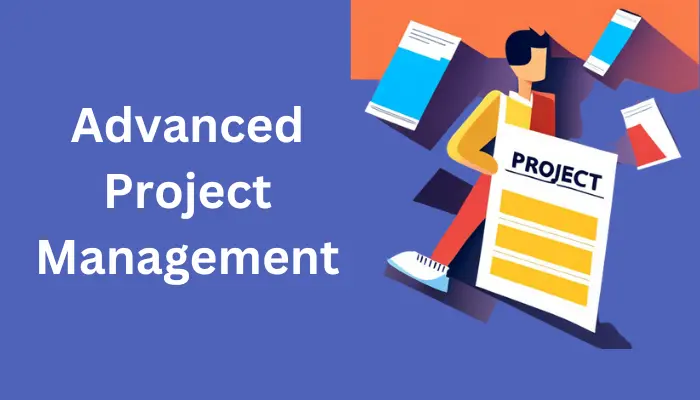
| Positive Aspects | Negative Aspects |
|---|---|
| 1. Enhanced Project Efficiency | 1. Increased Complexity |
| Advanced techniques and strategies can lead to greater efficiency and streamlined project execution. | Advanced project management often involves complex methodologies that can be difficult to implement and manage. |
| 2. Improved Risk Management | 2. Higher Costs |
| Advanced skills provide better tools for identifying and mitigating risks, leading to more successful project outcomes. | Implementing advanced techniques and tools can incur higher costs for training, software, and resources. |
| 3. Greater Ability to Handle Complex Projects | 3. Requires Significant Experience |
| Advanced project management skills enable you to manage larger and more complex projects effectively. | Mastery of advanced techniques typically requires extensive experience and a deep understanding of project management principles. |
| 4. Enhanced Stakeholder Engagement | 4. Potential for Over-Optimization |
| Advanced skills can improve stakeholder communication and engagement, ensuring better alignment and satisfaction. | Focusing too much on advanced techniques may lead to over-optimization, potentially complicating processes without adding value. |
| 5. Better Strategic Alignment | 5. Risk of Scope Creep |
| Advanced project management helps ensure projects align with broader organizational goals and strategies. | Advanced methodologies may lead to scope creep if not managed carefully, as increased detail can sometimes expand project scope unnecessarily. |
Your experience and skills will become better honed as you progress further in your project management career, so learning more advanced techniques and methodologies is essential for managing even upper-level projects successfully. Some important areas of project management improved with advanced ones:
Advanced Methodologies
Lean Project Management: is an approach from lean manufacturing principles that emphasizes the maximization of value with least amount waste and reduce process predictability. This promotes ongoing iteration and effectiveness for project delivery.
PRINCE2: A process-driven project management method employed in both the public and private sectors. PRINCE2 (Projects IN Controlled Environments), with its stress on clearly defined roles and responsibilities, structured stages, and regular reviews
Enhancing Leadership Skills
Emotional Intelligence: Improve self- and social-awareness of your behavior end traits as well the ones from team mates. It is something that enhances person to person dialogue, when a conflict starts or makes the team connection stronger.
Strategic Vision: Know where you want to be in the long-term and ensure your projects help support these organizational goals. This approach at this perspective also aids in taking the right decisions and managing your work efficiently.
Advanced Risk Management
Qualitative and Quantitative Risk Analysis – Employ both qualitative tools including risk probability impact assessment as well as quantitative methods like Monte Carlo simulations to provide an in-depth analysis of risks.
Plan for Risk Mitigation: Create solid plans to manage the risks you have identified After that use strategies like Contingency Plans, risk transfer transparents and avoid those risks.
Resource Management and Optimization
Resource Leveling: Unable to overload resources, adjust the project schedule. This helps to set the workload at a more sustainable pace and minimizes burnout.
Critical Chain Project Management (CCPM) – A commitment-focused project management technique, aiming to create manageable timelines and reduce sensitive lead times. CCPM promotes buffer management to manage uncertainties and keep the project on track.
Stakeholder management itself is very effective
PLAN(ning): Develop advanced communication plans for different groups of stakeholders and mediums to ensure the stakeholder awareness plus engagement at all times.
Stakeholder Analysis and Mapping: Understand who is a stakeholder, map them on the basis of their influence/interest in the project. Visualize stakeholder and engagement strategy mappings using stakeholder maps,
Leveraging State-of-the-Art Tools and Technologies
Integrated Project Management Software: Acquire higher-quality PM software that is integrated with other organizational systems, real-time data analytics and actionable insights from AI. Examples are Microsoft Project Online, Jira, Smartsheet etc.
Automation and AI: Use automation tools for repetitive tasks, project outcome predictions through Artificial Intelligence; intelligent resource management with better utilization. They can greatly improve efficiency and decision-making.
Optimization and Upgradation
Certifications, Workshops and Courses: Commit to Do professional development with certifications like PMP, PMI-ACP or degree in Six Sigma. Keeping up-to-date with new industry standards and techniques is a must to ensure growth.
Undertake Retrospectives and Process Improvement: On a regular basis review how your project performed over the past period, floor this back to key factors from our earlier section on managing change. Adopt and continuously improve processes in order to enhance the outcomes of future projects.
This will put you in a position to handle any complex project and help organizations grow while meeting their strategic goals. High level project management is building upon your skills, pioneering new ways and always turning over rocks. Keep learning, keep growing and being B E T A in project management
Remote Project Management
In a world becoming more and more digital, remote project management is inevitable. Remote team management comes with its own set of challenges and opportunities. 7 Remote Project Management Tips that are essential to being successful at managing projects from a distance.
Effective Communication
Digital Communication Tools: Take advantage of tools like Slack, Microsoft Teams, or Zoom for instant communication and collaboration. The video conference, instant messaging and file sharing functions of these tools will keep you in connection with your team.
Freuquent Check-ins: Host regular team meetings to track project progress, address blockers and keep the camaraderie on. Start the right meetings, maybe daily stand-ups or weekly check-ins to ensure that everyone is synchronized and on same page.
Setting Clear Expectations
Well-Defined Roles and Responsibilities: Define exactly what each team member should be doing. This provides accountability and prevent ambiguity or double work.
Set Deadlines:Deadlords – Project completion deadlines and objectives should be set based your ability to achieve them. So make sure that you are transparent about what these expectations are and people understand when the due dates/associations of process times should be to satisfy timetables in the project.
Leveraging Technology
SoftwareProject Management: Utilize strong project management frameworks, for example, Asana or Basecamp to oversee undertakings; deadlines and tasks These tools help in the planning and also gives an overview of where the project stands.
Cloud Storage Solutions: Use a cloud storage provider like Google Drive or Dropbox to save project files and share them with your team. This guarantees that each team member gets the current document and collaborate effortlessly with their colleagues.
Fostering Team Collaboration
Virtual Team Building Arrange for virtual team building so members of your remote team can get to know one another and feel part of the same group. Examples of this can be online games, virtual coffee breaks, team challenges etc.
Foster Transparency: Embrace a culture of transparency where employees can easily express their thoughts, raise questions and provide desired feedback. This improves Collaboration and Beneficial for the Project Results
Monitoring and Reporting
Weekly or Bi-Weekly Check Ins: Set-up a built in system for team members to touch base so that you can gauge whether the work is actually getting done. Whether that be weekly written reports, or in your project management software as and when progress is made.
Track KPIs to measure project performance. These can be used as red flags to determine where the team may need extra help or areas that might necessitate tweaking in a project plan.
Flexibility and Adaptability
Adjust for Overseas Time zones: When managing a global team, adherence to the time zone rules is very important. If possible, hold meetings at times when everyone on the team can attend and offer some flexibility with respect to deadlines since working hours may vary for people in different locations.
Accept it Or Not, be ready for good changes:You have to make yourself adaptive in changing scenarios and in this remote project management there is much to learn. Remain adaptable and able to incorporate tweaks where necessary in order to meet project standards.
Utilizing these approaches ensures that remote project management can be equally if not more successful than traditional in-office management. Utilize the tools and techniques provided; keep communication strong, flexibility is key!
What skills are needed to get project management?
| Pros | Cons |
|---|---|
| 1. Enhanced Organizational Skills | 1. Time-Consuming |
| Developing skills like scheduling, task management, and resource allocation improves overall organizational abilities. | Acquiring these skills takes time and dedication, which can be challenging to balance with other responsibilities. |
| 2. Improved Communication | 2. Requires Continuous Learning |
| Effective communication skills help in clearly conveying project goals, updates, and feedback to stakeholders and team members. | Project management requires ongoing learning and adaptation to new tools, techniques, and best practices. |
| 3. Better Problem-Solving Abilities | 3. High Pressure and Responsibility |
| Strong problem-solving skills enable project managers to handle issues and challenges proactively and efficiently. | The role often comes with high pressure and significant responsibility, which can be stressful and demanding. |
| 4. Effective Leadership and Team Management | 4. Potential for Skill Overlap |
| Leadership skills are crucial for motivating and guiding teams, ensuring productive collaboration and project success. | Some skills might overlap with other roles or be less relevant depending on the project’s nature, leading to potential inefficiencies. |
| 5. Enhanced Risk Management | 5. Initial Learning Curve |
| Skills in risk assessment and mitigation help in identifying potential issues early and implementing strategies to address them. | There is often a steep learning curve when developing these skills, especially for those new to project management. |
Frequently Asked Questions (FAQ)
Remote Project Management What Is It?
Remote project management is the process of supervising a project with a dispersed team in different physical locations. It takes place using digital project management apps to assign duties and communicate, in order that everybody is all the time on the identical web page.
What is the model of communication that I have with my remote team?
Use digital tools to communicate as you would with a remote team (Slack, Microsoft Teams, Zoom). Meeting regularly, at a minimum daily standups or weekly team meetings help keep the whole on track.
What Are Some Key Strategies for Managing Expectations with a Remote Team?
Establishing the roles and responsibilities is a key element to ensuring you are set apart for success right out of the gate, as well as pragmatic deadlines & everyone understands their unique contributions. Set these expectations in team meetings and your documentation.
What Are the Best Project Management Tools for Remote Project Managers?
Asana: As one of the more comprehensive project management tools out there, teams can get a lot done with Asana…Trello: Telling an Agile team to use Gantt charts is like telling them cardio machines exist – Baselines and burn rates just haven’t been their priority. They focus on task organization, tracking progress and helping project status remain clear.
What about teams working remotely and other forms of team collaboration?
Organize team-building activities virtually such as video games or virtual coffee breaks. This will instill a culture of transparency and open communication where everyone is not afraid to give ideas, ask questions or feedback.
Remote Time: How to juggle different time zones in a project?
In a global team, keep the time in mind and make conference call at reasonable charges (8pm) while not having to compromise anybody [ restriction is yours only ] Some journalists operate on different hours than 9-to-5 standards, so be flexible in setting your deadlines accordingly to allow all staff members a level playing field.
Remote Project Management KPIs to monitor:-
Keep tabs on KPIs specific to your project, like the percentage of tasks being completed, number of milestones met and overall status against target. Regular forecasts and statistics points out the need for any kind of assistance or enhancement.
Secure Remote Project Management
Share documents using Goole drive, Dropbox like reputed places and also care for data to be secure. Secure protocols include encrypting and putting access controls around your data.
How if Project Scope changes or problem-solving in a remote environment
Be ready for change (flexible) * Be willing to learn more about yourself, your audience and improve what you are doing. Change your strategy if it does not cover emerging problems or adapted project objectives. Ongoing communication and routine team check-ins will recognize problems sooner and provide us with the ability to adapt our plans.







Your attention to detail in this report was exceptional. It’s clear that you put a lot of effort into ensuring accuracy
Thank you very much for your feedback
I appreciate your willingness to take on challenging tasks and tackle them with confidence. It’s a valuable trait
Thank you very much for your feedback
Your ability to listen and incorporate feedback shows a strong commitment to personal and professional growth
Thank you very much for your feedback